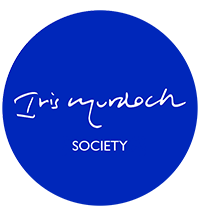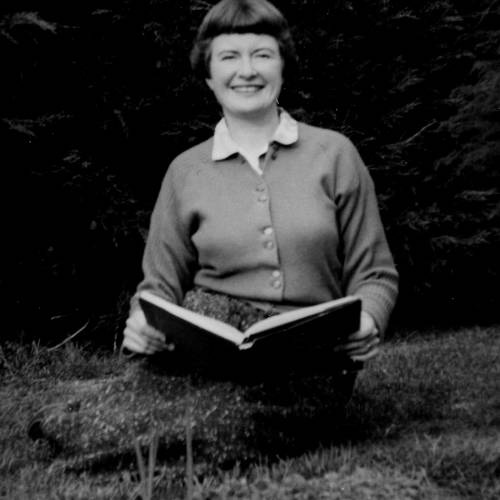La Grande Murdoch meets Australia’s Trickster-poet
Australia’s ‘trickster-poet’ Gwen Harwood (1920-1995), a brilliant and, in her time, controversial figure, was a great admirer of Iris Murdoch, and in 1967 had a chance briefly to meet her.
Harwood was born in Queensland but lived most of her adult life in Tasmania. Married with four children, she ‘hated being confined to a single identity, a single narrative, a single voice’ and she published poems under at least five different pseudonyms. She was a music-lover, like Murdoch, but unlike her British contemporary she studied music and played the piano and organ. She and Murdoch both wrote poetry, of course, but Harwood never wrote a novel, while Murdoch’s poetry remained largely unpublished and unknown until quite recently. Above all, perhaps, while they were both intellectually brilliant and enjoyed great literary success, they were female at a time when literary and academic genius was assumed to be a male attribute. Murdoch was not unaffected by this prejudice, but with a childless marriage and a career at Oxford university she was more able to side-step it than Harwood, who could not spare the time from her family duties to write a novel, let alone a work of philosophy. Harwood’s first book of poetry was published in 1963, and the second in 1968.
Harwood’s biographer, Ann-Marie Priest, recently shared with me some extracts from her letters, some of them unpublished. I have always been interested in Harwood (partly because her son John was one of my literature lecturers at Flinders University) but I hadn’t been aware of the Murdoch link. Harwood seems to have read the novels as they appeared. In July 1962 she reported to her friend Alison Hoddinott that she had just read A Severed Head ‘(v. good)’, and the following year she asked Alison whether she had read The Unofficial Rose and ‘a new one’, The Unicorn. ‘I’m a constant admirer.’ She added that she had seen a picture of her in Time: ‘I’ve never seen her in really nice clothes – doesn’t she have a Good Black?’ (27 November 1963). In a letter of September 1970, reprinted in her selected letters, she recommends Bruno’s Dream – ‘Marvellous’ – to Edwin Tanner.
In March 1967 Harwood was asked to interview Murdoch for ABC radio when she and John Bayley visited Hobart as part of their British Council tour of Australia. A recording or transcript of the interview doesn’t appear to survive, sadly, but Harwood recounts the experience in several letters to her friends. An unpublished postcard to Alison Hoddinott from 22 March 1967 reads:
I did a radio interview with Iris Murdoch yesterday; I am quite drunk with delight at having met her – wonderful woman, someone like Sappho I’m sure. Afterwards she told me she liked the interview & the questions were good. She is just like the pictures I have of her. … Their discourse on the novel was superb.
Ten days later, in a letter to Tony Riddell (published in the collected letters), she wrote at greater length:
[I] spent a blissful half hour with La Grande Murdoch in a room at the University with Oscar Wilde-ish technicians hovering round ‘balancing’ us. I forgot to listen to the interview, but John [her eldest child] heard it and said it was very good. Murdoch was incredible: she appeared in a granny dress, textured stockings, decrepit flat shoes, a cardigan of no shape and an orange raincoat. In spite of this get-up and her knotty hair she was beautiful, and not at all formidable, as I feared she would be. Her husband John Bayley, also an Oxford don, affected the same style of dress – though ‘affected’ suggests a planned intention; plainly they had adopted Wilde’s advice: ‘Don’t arrange it, let it occur.’ He also had a difficulty with speech which caused agonising pauses & contortions, particularly when he attempted to utter the word ‘Novel’, which he did in every other sentence. They glittered intellectually & their ‘Dialogue on the Novel’ was one of the best things I have ever heard; I generally hate talk about literature, but theirs was excellent.
Her biographer, Ann-Marie Priest, remarked to me that Harwood ‘seems to have been mildly obsessed with’ Murdoch’s clothes. In an unpublished letter to Ann Jennings of 3 April 1967 she wrote:
I interviewed Iris Murdoch for radio; she is oddly beautiful in spite of weird clothes (she wore a tailored long sleeved blouse with a short-sleeved blouse over it!) and knotty hair. Once she started to speak she became radiant.
The Hobart visit was the end of Murdoch and Bayley’s six weeks in Australia. They flew there from Adelaide on 20 March and the meeting with Harwood was the following day. This in itself might partly explain their eccentric clothes, as the temperature in Hobart in March is likely to be considerably lower than in Adelaide. They might both just have piled on everything they had in their luggage, including her shapeless cardigan and orange raincoat.
In Murdoch’s diary – which is extremely abbreviated – the entry for that day reads merely, ‘University. Lunch Mrs Vice-Chancellor. Visit VC in bed (Isles?) Dinner Govt House – Sir Charles Gairdner.’ She confided to Brigid Brophy in a letter written on the day before they left Adelaide that ‘The elan that keeps one going is just about giving out, and I am beginning to want most intensely to be home. … I feel faintly crazy, as if I’d quietly become another person.’ Harwood’s letters show that she was able to transcend her disorientation and exhaustion at least for the time they spent together, and not only to ‘glitter intellectually’ but also to make kind remarks about the interview and to be ‘not at all formidable’. It seems unlikely that Harwood had time to talk about herself, and Murdoch probably had no idea that she had met one of Australia’s most remarkable poets. It is difficult not to regret this lost opportunity – they surely had much in common – and it is also frustrating that the interview doesn’t survive. But at least we have Harwood’s vivid account of meeting Murdoch and the feeling of great good luck that she could spend even half an hour in her presence.
IM diary entry courtesy Audi Bayley.
GH unpublished correspondence Copyright © Estate of Gwen Harwood.

